Expanding Horizons: ABA Therapy Beyond Childhood
Introduction to Sensory Differences in Neurodevelopmental Conditions
Sensory processing disorders (SPD) and autism spectrum disorder (ASD) are closely related conditions characterized by sensory processing differences, yet they are distinct in their scope, symptoms, and underlying mechanisms. This article explores these differences, the neurological basis, diagnosis, and treatment approaches to provide clarity for clinicians, caregivers, and individuals navigating these conditions.
Defining Sensory Processing Disorder and Autism
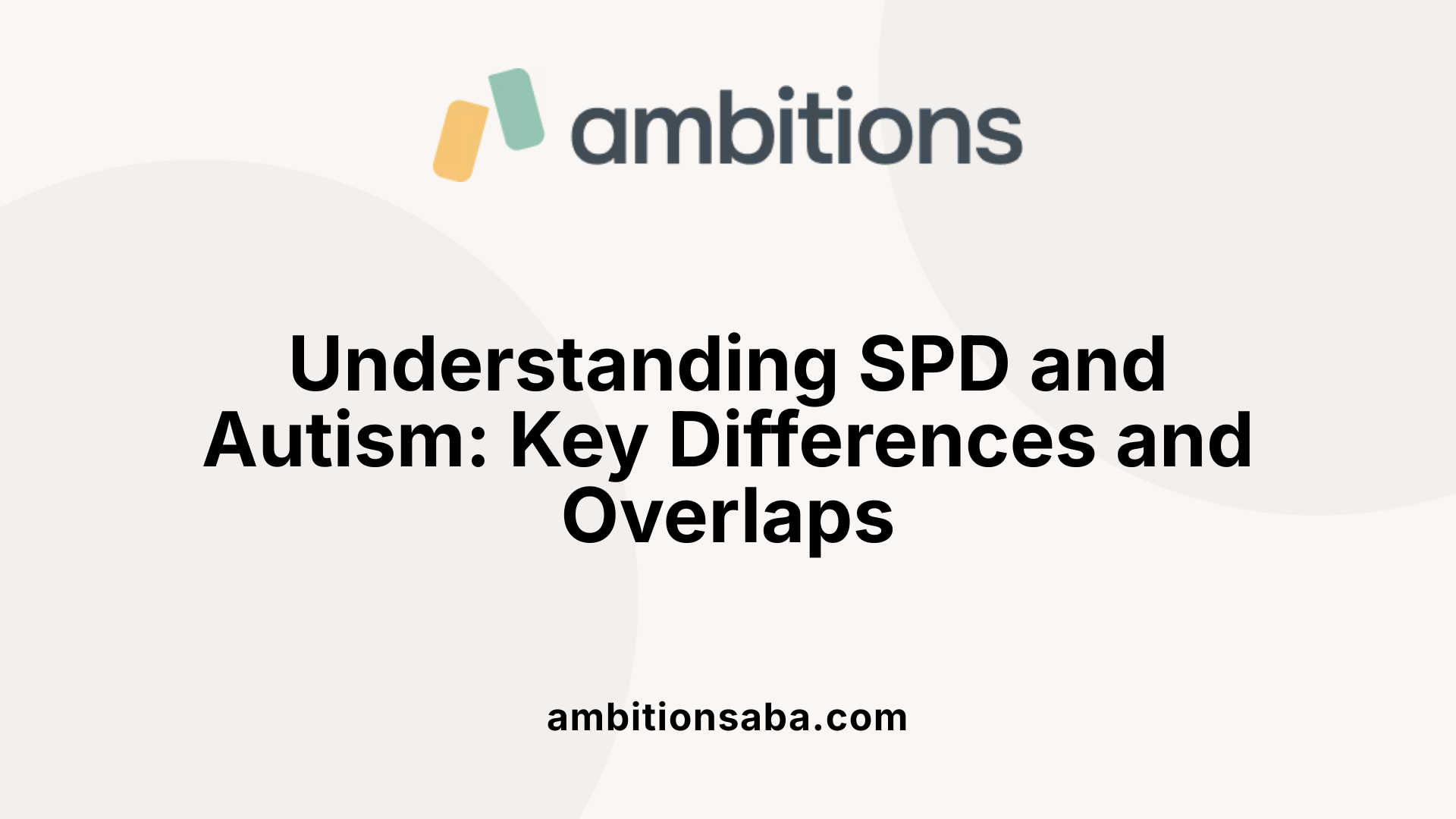
Overview of SPD and autism
Sensory Processing Disorder (SPD) and autism spectrum disorder (ASD) are both neurodevelopmental conditions, but they differ in their scope and diagnostic criteria. SPD involves how the brain perceives and responds to sensory stimuli, leading to over- or under-reactivity, or seeking behaviors. Autism encompasses a broader set of challenges, including social communication difficulties, restricted interests, and repetitive behaviors.
While many children with autism also experience sensory issues, not all children with SPD are autistic. SPD may occur independently and can affect daily routines and behaviors without impacting social skills directly.
Core features and diagnostic criteria
Autism is characterized by persistent struggles with social interaction, such as difficulty in understanding social cues, and the presence of restricted, repetitive behaviors or interests. Diagnosis depends on behavioral assessments that evaluate communication skills, social responsiveness, and behavior patterns, without any specific medical test.
SPD, on the other hand, involves challenges in processing sensory inputs from sight, sound, touch, taste, smell, and internal senses like balance. Symptoms include hypersensitivity to stimuli like bright lights or loud noises, hyposensitivity leading to a lack of response to sensory inputs, and sensory seeking behaviors such as spinning or touching objects excessively.
Although SPD is not officially listed in the DSM-5, it is recognized clinically through assessments of sensory sensitivities and responses. Both conditions may co-occur, with studies showing over 80% of children with autism also exhibit SPD symptoms.
Symptoms of Sensory Processing Disorder
Symptoms include feeling discomfort in clothing, gagging from food textures, constant need to touch objects, and difficulty recognizing personal space. These sensory challenges can lead to emotional and behavioral responses, affecting social participation and daily activities.
Treatment approaches and coping strategies
Effective management often involves occupational therapy centered on sensory integration techniques. These may include controlled sensory experiences like swinging or using weighted vests to help regulate responses. Behavioral therapies, such as applied behavior analysis (ABA), improve communication and social skills.
Environmental modifications—like quiet spaces, sensory tools, and routine adjustments—support sensory regulation. Psychological therapies can also aid in handling associated anxiety or behavioral issues.
Differentiating SPD and autism
The key difference between SPD and autism lies in their scope. SPD focuses solely on sensory processing difficulties, whereas autism includes social, communication, and behavioral challenges. Recognizing these differences guides tailored interventions to support affected individuals effectively.
Neurological Foundations of SPD and Autism
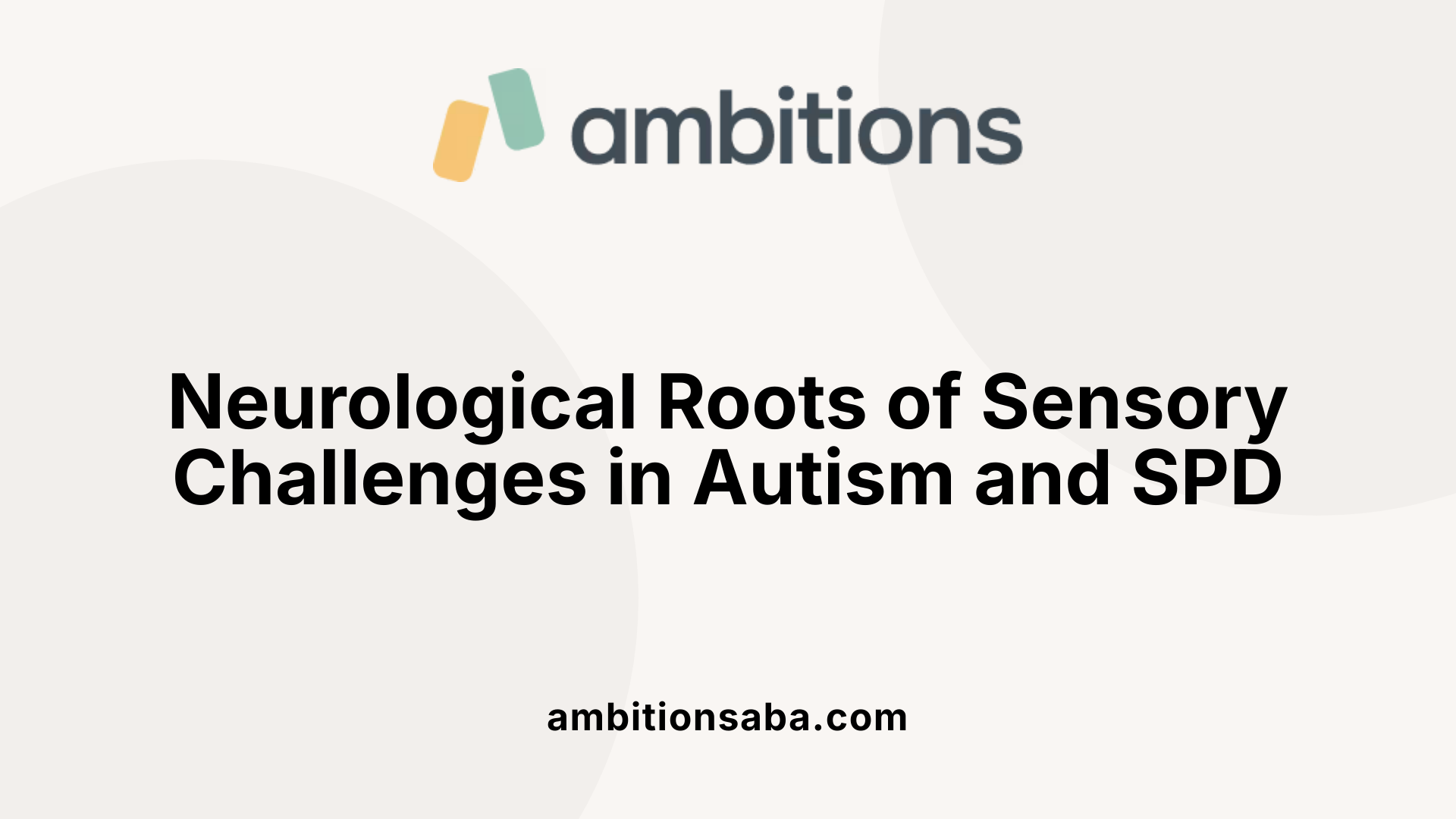
How do sensory processing difficulties differ in individuals with high-functioning autism compared to other forms of autism?
Individuals with high-functioning autism (HFA) experience sensory processing challenges similar to those observed in more severe autism cases, such as hypersensitivity (over-responsiveness) and hyposensitivity (under-responsiveness) to sensory stimuli. These difficulties often include heightened reactions to sounds, lights, textures, or smells, and sometimes a lack of response to sensory inputs.
However, the severity of these symptoms is generally milder in HFA. People with HFA tend to have fewer or less intense behavioral responses related to sensory issues and may better manage sensory overload. Importantly, they typically do not have significant delays in language or social cognition, which are more common in other autism spectrum presentations.
Overall, the main differences are in how severe the sensory sensitivities are and how much they affect daily life. While both groups show atypical neural responses, individuals with HFA often demonstrate a less profound impact, making their sensory problems easier to accommodate with targeted strategies.
What neural mechanisms contribute to SPD and ASD?
Both SPD and autism involve noteworthy differences in brain structure and connectivity, but they affect different neural pathways. Studies with brain imaging show that children with ASD tend to have impairments in regions involved in social emotion recognition, such as the amygdala and prefrontal cortex. They also show reduced connectivity across long-distance neural pathways, especially between frontal and posterior brain regions, which contributes to challenges in social interaction and communication.
In contrast, children with SPD primarily display disconnection in brain areas responsible for sensory processing. These disruptions can impair how sensory signals are detected, filtered, and integrated. Some common underlying mechanisms for both conditions include altered neural pathways, deficits in sensory gating (the brain’s ability to filter irrelevant stimuli), and an imbalance between excitatory and inhibitory neural activity—known as E/I imbalance.
While both SPD and ASD involve neural disconnection, the specific circuits affected differ, leading to their distinct behavioral and perceptual features. In autism, these neural differences mainly impact social and emotional processing, whereas in SPD, they primarily affect sensory perception and modulation.
Understanding these neurological foundations helps clarify why these conditions often coexist yet remain distinct, guiding more precise intervention approaches.
Diagnostic Criteria and Assessment Processes
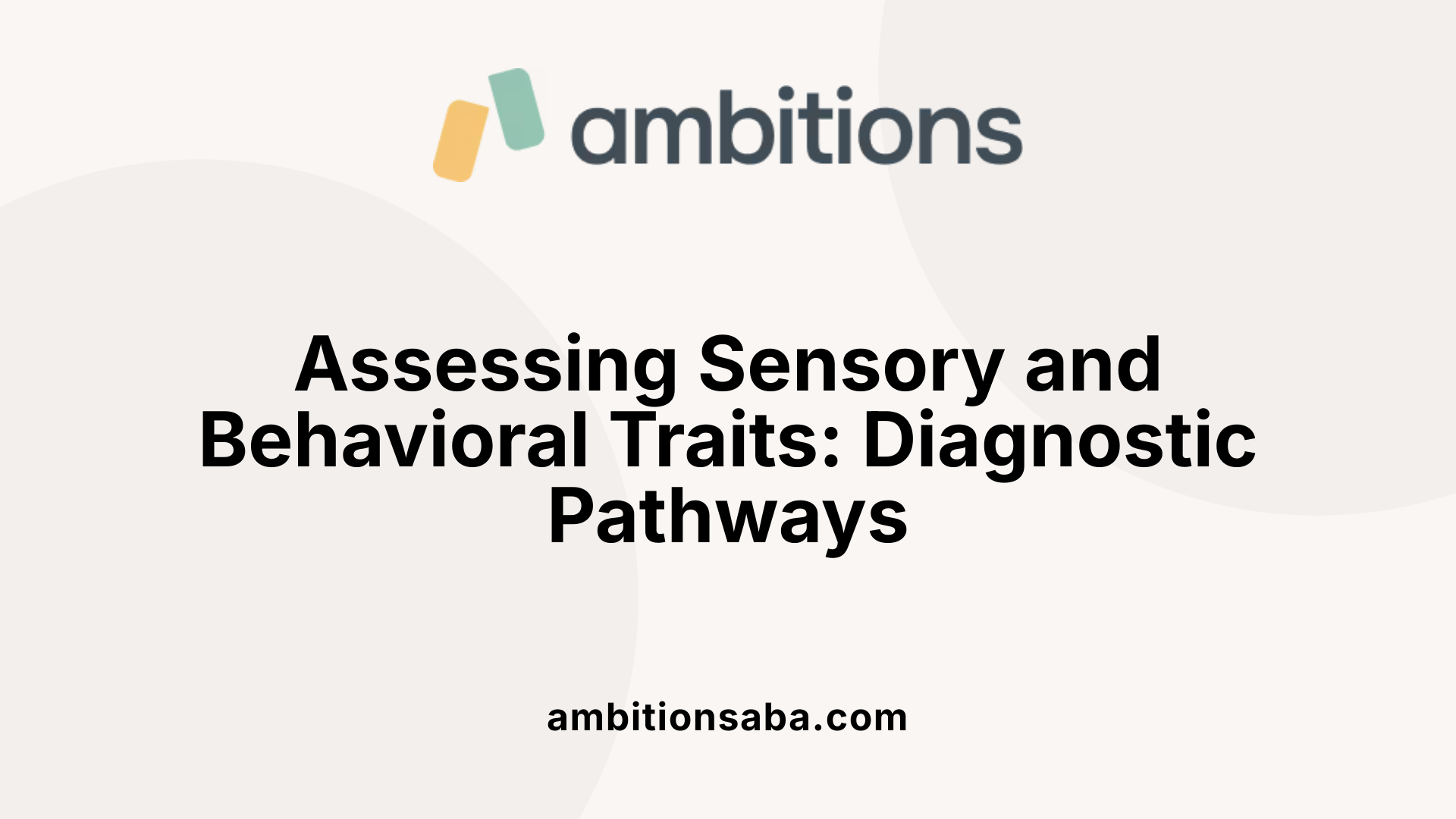
Can individuals have sensory processing issues without being diagnosed with autism?
Many people experience sensory processing challenges independently of autism spectrum disorder (ASD). Sensory processing disorder (SPD) is a neurological condition marked by the brain’s difficulty in detecting, modulating, and interpreting sensory stimuli, such as sounds, lights, textures, and internal sensations. Unlike autism, SPD is not officially recognized in the DSM-5 as a standalone diagnosis, yet it is a real condition that affects daily functioning.
Individuals with SPD may be hypersensitive or hyposensitive to various stimuli. For example, some might find bright lights or loud noises overwhelming, while others may seem unresponsive to touch or sounds. These sensory difficulties can lead to behaviors like avoiding certain environments or experiencing distress during sensory overload.
Since SPD can occur in people with other conditions—such as attention deficit hyperactivity disorder (ADHD), developmental delays, or mood disorders—it is not exclusive to autism. Proper assessment by healthcare professionals is essential to identify sensory processing issues accurately, regardless of whether autism is also present.
What is the relationship between sensory processing challenges and diagnoses such as autism or ADHD?
Sensory processing difficulties are especially common in autism. Studies suggest that over 80-90% of children with autism exhibit sensory issues, including heightened sensitivities or sensory seeking behaviors. These challenges are often integral to autism’s core features and are associated with atypical brain development in sensory regions.
In autism, sensory problems can manifest as over-reactivity, under-reactivity, or repetitive sensory behaviors like rocking or hand-flapping. These behaviors can impact social interactions and emotional regulation.
While sensory issues are prevalent in autism, they are also observed in ADHD. Although not part of the official ADHD diagnostic criteria, many children with ADHD seek sensory input or struggle to filter stimuli, which can worsen inattention and behavioral difficulties.
Children with both conditions may experience more intense sensory processing problems, leading to increased challenges in daily life. Recognizing these differences is crucial for tailored intervention strategies.
How are sensory processing disorders assessed?
Diagnosis of sensory processing challenges involves a combination of behavioral assessments and clinical observations. Professionals such as occupational therapists use standardized tools and checklists, like the Sensory Profile or the Sensory Processing Measure, to evaluate how children respond to sensory stimuli.
Since SPD is not recognized officially in DSM-5, there are no formal diagnostic criteria. Instead, clinicians rely on clinical judgment and comprehensive evaluations to determine if a child's sensory responses interfere with daily functioning.
Assessment also involves ruling out other conditions and understanding the context of behaviors related to sensory responses. Early diagnosis allows for effective intervention, often through sensory integration therapy and environmental modifications.
Additional Resources
If you are seeking more detailed information, search queries like 'diagnostic assessment for SPD and autism' can lead to professional guidelines, research articles, and clinical resources to better understand the assessment process and criteria.
| Aspect | Description | Additional Notes |
|---|---|---|
| Official recognition | Autism is DSM-5 recognized; SPD is not officially listed | SPD is still a clinical diagnosis based on symptoms |
| Assessment tools | Behavioral checklists, clinical observation, sensory profiles | No standardized test exists for SPD in DSM |
| Diagnosis approach | Multi-disciplinary, involving occupational therapists, psychologists, doctors | Focuses on functional impact of sensory issues |
| Common assessments used | Sensory Profile, Sensory Processing Measure | Used to guide therapy and intervention |
| Importance of early diagnosis | Yes, improves intervention outcomes | Recognizes need for tailored sensory-based therapies |
Intervention Strategies and Support Methods
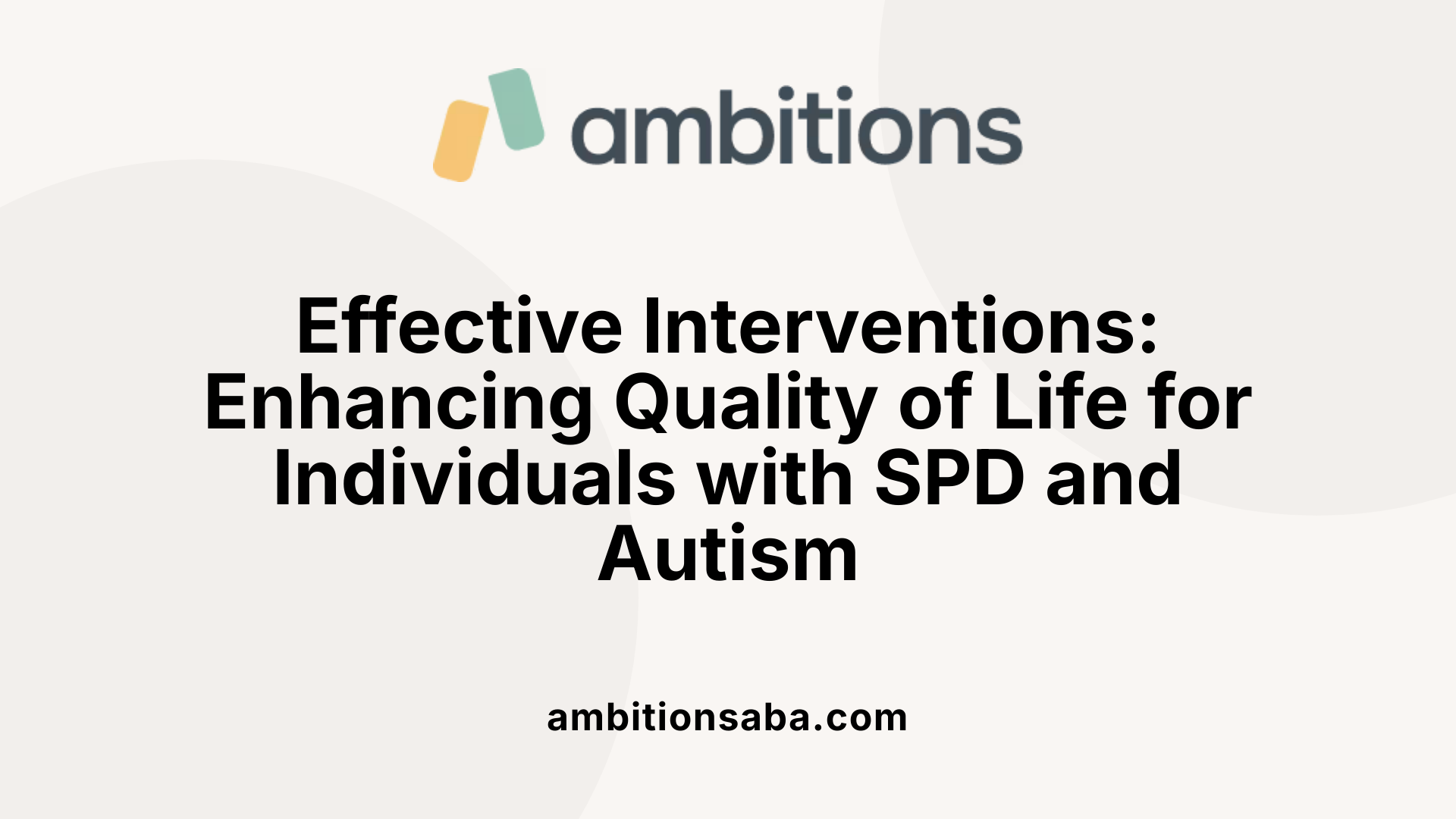 Autism spectrum disorder (ASD) and sensory processing disorder (SPD) often require tailored intervention strategies to help individuals better manage their sensory sensitivities and developmental challenges. One of the most widely recommended approaches is occupational therapy, which focuses on sensory integration techniques. Sensory integration therapy involves controlled exposure to sensory stimuli—such as swinging, using weighted vests, or engaging in sensory diets—to promote more typical responses and regulation of sensory inputs.
Autism spectrum disorder (ASD) and sensory processing disorder (SPD) often require tailored intervention strategies to help individuals better manage their sensory sensitivities and developmental challenges. One of the most widely recommended approaches is occupational therapy, which focuses on sensory integration techniques. Sensory integration therapy involves controlled exposure to sensory stimuli—such as swinging, using weighted vests, or engaging in sensory diets—to promote more typical responses and regulation of sensory inputs.
In addition to sensory-specific therapies, behavioral interventions like applied behavior analysis (ABA) are commonly employed. These therapies aim to improve social skills, communication, and reduce problematic behaviors by reinforcing positive responses. Developmental therapies also support communication and social interactions, which are often areas of difficulty in ASD.
Environmental modifications play a crucial role in creating supportive spaces. Sensory-friendly environments can include quiet zones, reduced lighting, and the use of tools like fidget toys, noise-canceling headphones, and calming textures. Such adjustments help minimize sensory overload and foster comfort in daily routines.
Psychological approaches, including cognitive-behavioral therapy (CBT), are effective in addressing co-occurring mental health issues such as anxiety and depression, which frequently accompany sensory processing difficulties.
What treatment options are available for sensory processing issues and autism?
The combination of occupational therapy, sensory integration techniques, behavioral therapies like ABA, and environmental modifications form a comprehensive suite of treatment options. These interventions aim to improve sensory regulation, social functioning, and overall quality of life, enabling individuals to navigate daily environments more comfortably.
What are coping strategies that individuals and caregivers can employ?
Self-awareness of sensory sensitivities is vital. Recognizing personal triggers and establishing routines help in managing sensory overload. Using sensory tools such as chewable jewelry, weighted blankets, or calming music can provide comfort. Educating caregivers and peers about sensory differences fosters empathy and support, which are essential for emotional well-being. Simple adjustments like dimmer lights, reduced noise levels, and designated quiet spaces can significantly reduce stress.
Overall, understanding and integrating these strategies can lead to more effective management of sensory challenges, helping individuals participate more fully in social, educational, and daily activities.
Distinguishing Features in Behavior and Social Interaction
How do sensory processing difficulties differ in individuals with high-functioning autism compared to other forms of autism?
Individuals with high-functioning autism (HFA) experience sensory processing challenges similar to those seen in other autism forms, such as hypersensitivity and hyposensitivity to sensory stimuli. However, these difficulties tend to be less intense and may result in milder behavioral responses. People with HFA often have milder levels of sensory sensitivities, which can be managed more easily and may not interfere as profoundly with daily activities.
Both groups typically show atypical responses to sensory input and altered neural pathways involving sensory processing. The main difference is the severity and overall impact on daily functioning. Children with HFA usually do not have significant language delays or profound cognitive impairments that characterize other autism spectrum disorders.
In summary, while sensory issues are common across the autism spectrum, individuals with HFA generally display milder sensory sensitivities, which influence their behaviors and management strategies.
What behavioral signs distinguish autism from SPD?
Distinguishing autism from sensory processing disorder involves recognizing the broader behavioral and social differences. Autism spectrum disorder includes a range of social, communication, and behavioral challenges, such as trouble with eye contact, delayed speech, limited social reciprocity, repetitive behaviors, and strong routines.
In contrast, SPD primarily involves challenges with processing sensory information; individuals may seek or avoid sensory experiences but do not necessarily exhibit the social deficits typical of autism.
For example, someone with SPD might avoid certain textures or sounds because they find them overwhelming, or they may seek intense sensory input like spinning or touching objects excessively. However, they may still have typical language skills and social interactions.
Understanding these differences helps clinicians accurately diagnose and tailor interventions, ensuring that each condition is managed appropriately and effectively.
Impact of Sensory Issues Across the Spectrum and Conditions
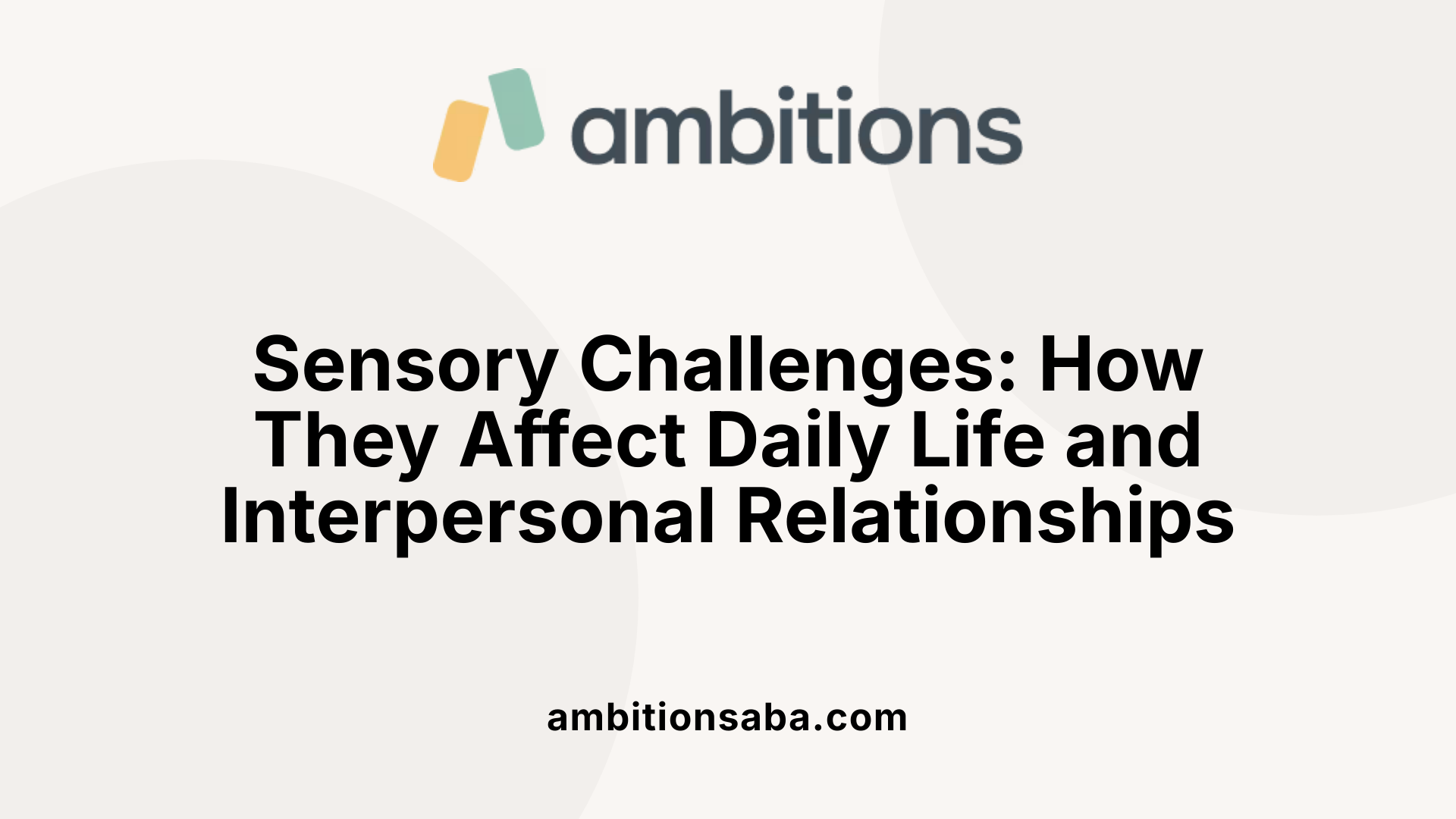
How does sensory processing difficulty manifest in daily routines and interpersonal interactions?
Sensory processing challenges can significantly influence a child's daily life. For example, they may be overwhelmed by bright lights, loud noises, or certain textures, leading to avoidance behaviors. These sensitivities can make activities like shopping, attending school, or visiting friends stressful or overwhelming.
Interpersonal interactions may also be affected. Children with sensory sensitivities might withdraw from group play or social gatherings to avoid sensory overload. During stressful situations, they might exhibit meltdowns or shutdowns, which can be misunderstood by peers and adults.
These sensory difficulties can interfere with educational progress, social skills development, and occupational routines. Tailored strategies—such as sensory-friendly environments, using calming tools, or sensory breaks—can help improve participation and overall well-being.
Is there an overlap between sensory issues in autistic individuals and those with other conditions like ADHD?
Yes, sensory challenges are common beyond autism. Many individuals with Attention Deficit Hyperactivity Disorder (ADHD) also experience sensory processing difficulties, such as being easily distracted by stimuli or seeking intense sensory input.
While sensory issues are a hallmark of autism—affecting up to 90% of autistic individuals—they are not exclusive to it. In ADHD, these challenges may manifest as difficulty filtering distractions, sensory seeking behaviors, or difficulty with sensory modulation.
Despite similar behaviors, the neural underpinnings differ. Autism-related sensory issues often involve altered brain connectivity in sensory and social processing regions, whereas in ADHD, difficulties may relate to deficits in attention regulation and sensory filtering.
Understanding these overlaps helps in developing accurate assessments and tailored interventions, ensuring that each individual's needs are properly addressed.
Summary and Differentiation of Sensory Processing Issues and Autism
While sensory processing challenges are common across neurodevelopmental conditions like SPD and autism, understanding their core differences and overlaps is essential for accurate diagnosis and effective intervention. SPD primarily involves sensory modulation and integration difficulties without inherently affecting social communication, whereas autism includes broader social, communication, and behavioral challenges alongside sensory differences. Recognizing the neurological basis, behavioral signs, and the spectrum of symptoms facilitates tailored treatment strategies, whether through occupational therapy, behavioral interventions, or environmental adjustments. Educating caregivers and individuals about these nuances enhances support systems and promotes better quality of life for those affected.
References
- Sensory Processing Disorder vs. Autism: What's the ...
- Sensory processing disorder vs. autism: How do they differ?
- It's Not Autism, It's Sensory Processing Disorder
- Sensory processing disorder (SPD)
- Sensory Processing Differences in Individuals With Autism ...
- Sensory Differences: Autism vs Sensory Processing Disorder
- Sensory Processing Disorder vs Autism
- Sensory differences - a guide for all audiences
- Differences Between Sensory Processing Disorder and ...

